
10 History Questions For Trivia Lovers
Difficulty : Medium Get 6/10 correct to pass the quiz
Question 1 of 10
Golda Meir was Prime Minister of which Middle Eastern country?
Question 2 of 10
Where was Vladimir Lenin exiled to?
Advertisement
Question 3 of 10
During which War was 'The Siege of Charleston' fought in the 1770-1780s?
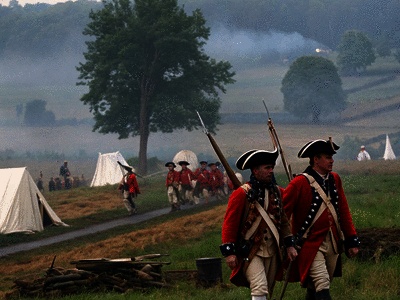
Question 4 of 10
During which civil war did the 'Battle of Vicksburg' take place?
Question 5 of 10
Protestors in which Asian country closed down several government buildings in 2013?
Question 6 of 10
The Catcher in the Rye is set in which country?
Question 7 of 10
What was President Hayes' first name?
Advertisement
Question 8 of 10
What was the name of the B-29 bomber that dropped the first atomic bomb on Hiroshima?
Question 9 of 10
What natural disaster is believed to have caused the decline of the culture of Ancient Crete?
Question 10 of 10
What was the name of William Henry Harrison's seventh child?
Advertisement

MORE QUIZZES
1960s Song Quiz
How many songs can you guess?
How many songs can you guess?
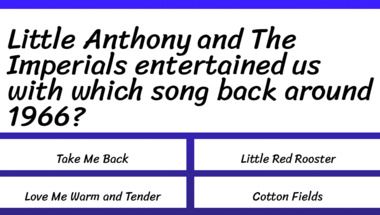
General Trivia Quiz
10 mixed questions for you to have fun with
10 mixed questions for you to have fun with

World History Trivia Quiz fo
10 mixed up history questions
10 mixed up history questions
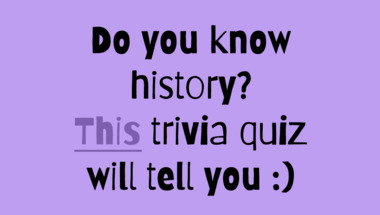
Expert level food & cook
10 very difficult questions
10 very difficult questions

Math Quiz For Everybody
You will fail, but how many of them?
You will fail, but how many of them?

World History Trivia Quiz
10 mixed history questions
10 mixed history questions
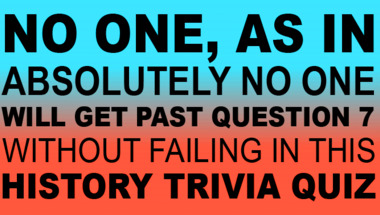
Mixed General Trivia Quiz
10 questions lined up
10 questions lined up
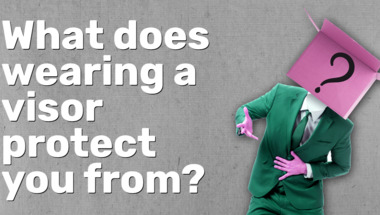
Hard general trivia quiz
10 questions that will most likely trick you
10 questions that will most likely trick you
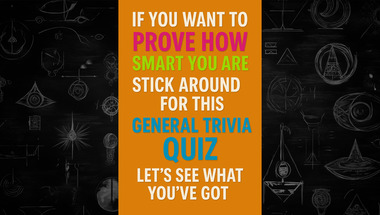
Movie Quiz
10 questions
10 questions

Mixed trivia quiz
10 hard questions
10 hard questions
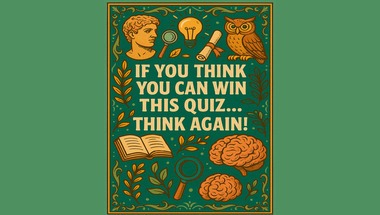
Trivia Challenge
Tuesday 31st July 2018
Tuesday 31st July 2018
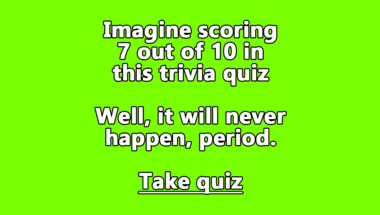
1960s Song Quiz
10 mixed questions in one quiz
10 mixed questions in one quiz

Advertisement
Music Quiz
How high can you score?
How high can you score?

Trivia quiz for people who a
Can you also score a solid 7/10?
Can you also score a solid 7/10?
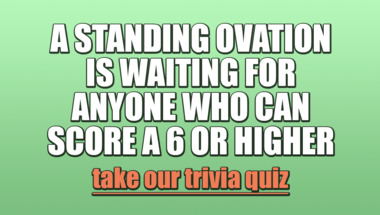
Amazing Trivia Quiz
10 hot questions
10 hot questions

Science Trivia Quiz
10 Quite Difficult Questions
10 Quite Difficult Questions

Hard trivia quiz
10 tricky questions
10 tricky questions
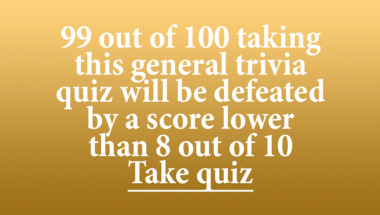
It is time for a trivia quiz
10 questions in different categories
10 questions in different categories
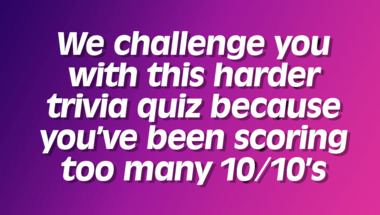
Cooking Quiz That You Need T
Show Us What You Got!
Show Us What You Got!

High IQ Trivia Quiz
10 mastermind questions
10 mastermind questions
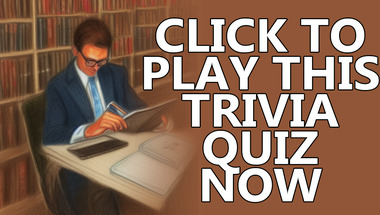
General Trivia Quiz
10 mi
10 mi
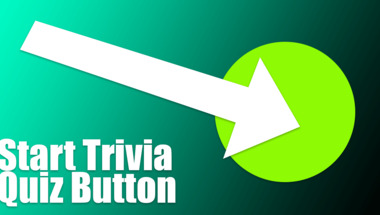
Quiz : 1970s Hits
How many of these fantastic songs do you reme..
How many of these fantastic songs do you reme..

Trivia quiz for clever owls
10 questions in different categories
10 questions in different categories
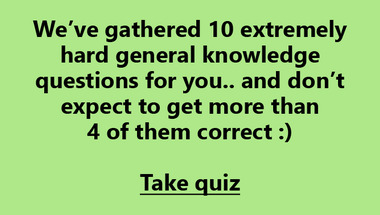
Movie Quiz
Post your score in the comments!
Post your score in the comments!

Advertisement
General Trivia Quiz
10 Impossible Questions
10 Impossible Questions

1979 song quiz
How many correct will you get?
How many correct will you get?

1970s Song Quiz
How many songs do you know?
How many songs do you know?

Brand new trivia quiz
10 questions in misc categories
10 questions in misc categories
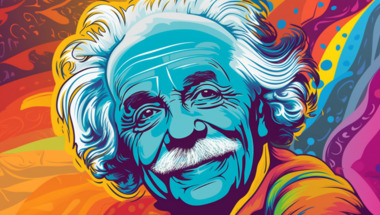
Senior Trivia Challenge
Can you even get 6 out of 10 correct?
Can you even get 6 out of 10 correct?

General knowledge 10 questio
How will you do in this hard test?
How will you do in this hard test?

General Trivia Challenge
10 random questions
10 random questions
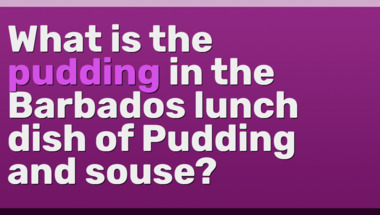
10 food and cooking question
Are you game?
Are you game?

General Knowledge For Trivia
How many of them will you answer correctly?
How many of them will you answer correctly?
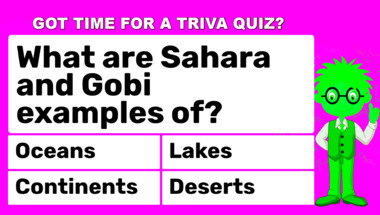
General Trivia Quiz with 10
Mixed categories
Mixed categories

History Quiz
Dust of your history knowledge with a little ..
Dust of your history knowledge with a little ..
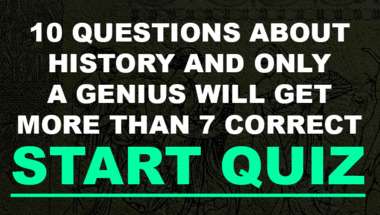
General Trivia Quiz
Let us know your score in the comments
Let us know your score in the comments
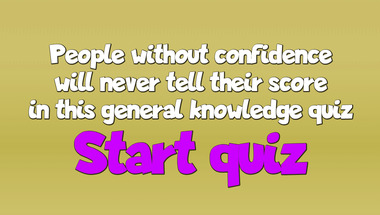
Advertisement
Quiz about sayings
10 mixed questions
10 mixed questions
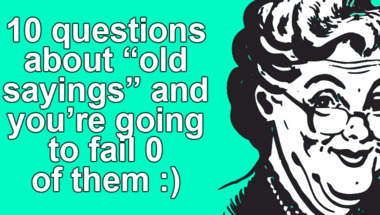
General trivia quiz (10 ques
Have fun!
Have fun!
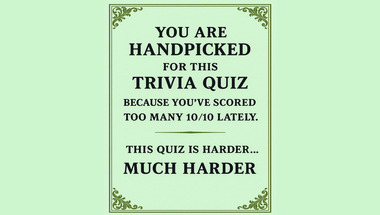
General trivia quiz
10 mixed questions
10 mixed questions
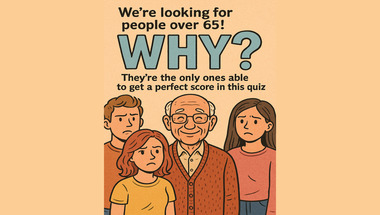
Trivia quiz with general kno
10 diverse questions
10 diverse questions
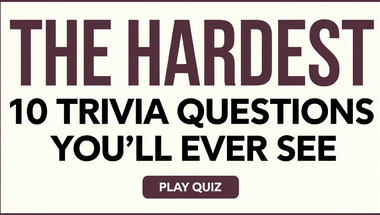
General Knowledge Quiz (10 q
Mixed category quiz
Mixed category quiz

General trivia quiz
10 questions
10 questions
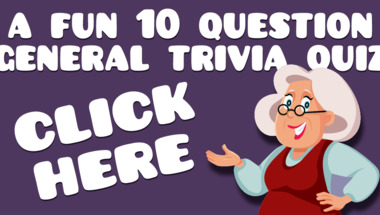
Quiz on Songs from the 1960s
Guess 10 songs.
Guess 10 songs.

Quiz about stuff on televisi
How many correct will you get?
How many correct will you get?

Food & Cooking Quiz
10 mixed questions for you
10 mixed questions for you

Trivia quiz with general kno
Test your knowledge with these 10 questions.
Test your knowledge with these 10 questions.

Food Quiz
10 mixed questions for you
10 mixed questions for you

Movie Quiz
Post your score in the comments!
Post your score in the comments!

Advertisement
1960s Song Quiz
Can you name the artists?
Can you name the artists?
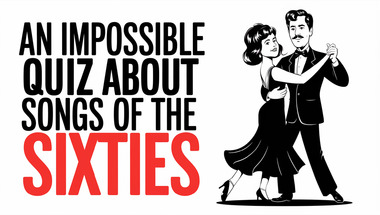
Mixed Knowledge Quiz
10 questions to test your knowledge
10 questions to test your knowledge
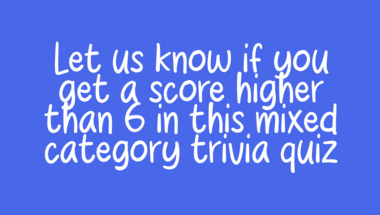
Music Quiz
How high can you score?
How high can you score?
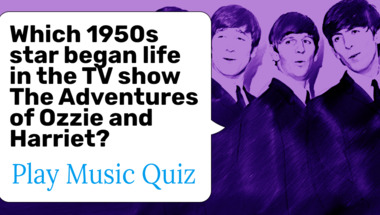
10 questions about old custo
How's your trivia brain doing?
How's your trivia brain doing?
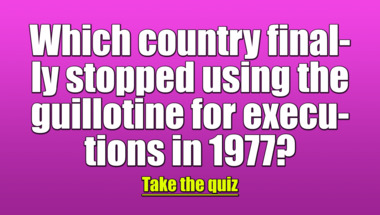
Mixed General Trivia Quiz
10 questions lined up
10 questions lined up
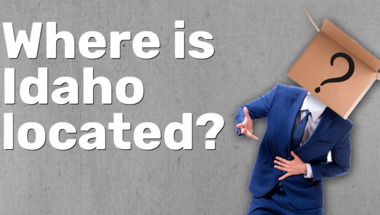
Hard movie quiz
10 movie related questions
10 movie related questions
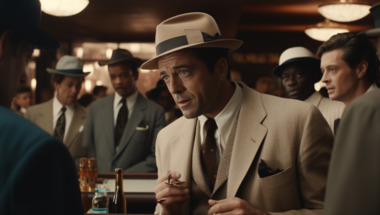
Expert level trivia quiz
10 rather difficult questions
10 rather difficult questions
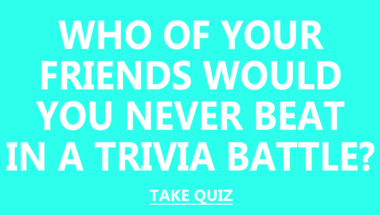
General trivia quiz
10 mixed questions
10 mixed questions
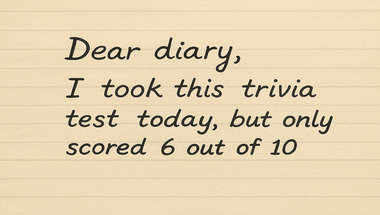
Einstein Quiz
Can you score 7 or higher?
Can you score 7 or higher?
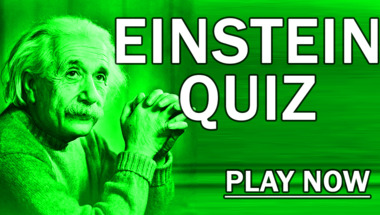
Quiz : Latin words
10 questions
10 questions
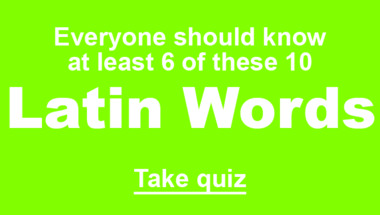
..ooOOoo.. Trivia Quiz ..ooO
How big is your brain?
How big is your brain?
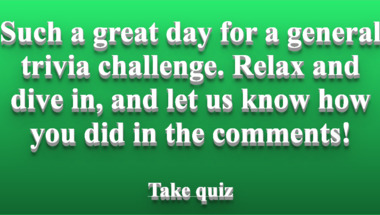
General Knowledge For Trivia
How many correct will you get?
How many correct will you get?

Advertisement
1970s Song Quiz
10 mixed songs to guess
10 mixed songs to guess

Spelling Quiz
Only a genius will get more than 6 correct
Only a genius will get more than 6 correct

10 mixed categories question
Let us know your score in the comments
Let us know your score in the comments

Mixed Knowledge Quiz
10 questions to test your knowledge
10 questions to test your knowledge

10 general trivia questions
How many correct will you get?
How many correct will you get?
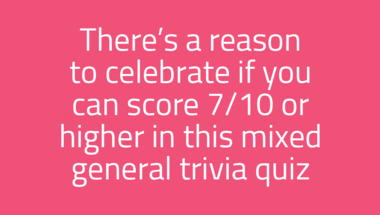
General Trivia Quiz
10 mixed general trivia questions
10 mixed general trivia questions
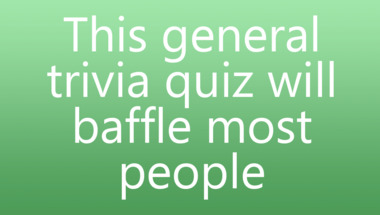
General Trivia Quiz
10 mixed questions
10 mixed questions

General Trivia Quiz
How many correct answers will you get?
How many correct answers will you get?

Quiz for people 50+
10 mixed questions
10 mixed questions

Who played the leading role
Most people will fail at question 6 and ahead
Most people will fail at question 6 and ahead

Fun Trivia Quiz For You
Only smart people stand a chance
Only smart people stand a chance
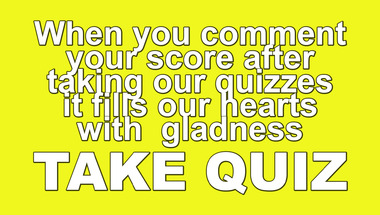
Music Quiz
10 thrilling questions
10 thrilling questions

Advertisement
General Knowledge For Trivia
How many of them will you answer correctly?
How many of them will you answer correctly?
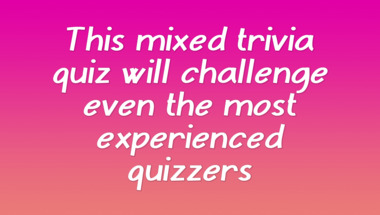
Hard Trivia Quiz
You wont beat this trivia quiz
You wont beat this trivia quiz
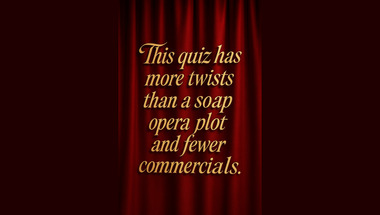
10 geography questions
Do you have what it takes?
Do you have what it takes?
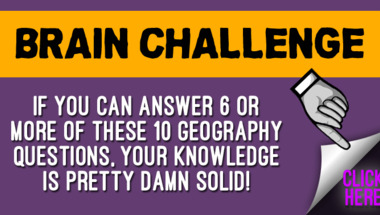
General knowledge quiz
10 miscellaneous trivia questions from differ..
10 miscellaneous trivia questions from differ..

10 trivia questions
Are you ready?
Are you ready?
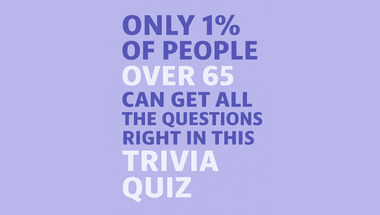
1970s Song Quiz
10 mixed questions
10 mixed questions

1964 Song Quiz
Can you guess these 10 singers/bands?
Can you guess these 10 singers/bands?

Mixed General Trivia Quiz
10 questions lined up
10 questions lined up
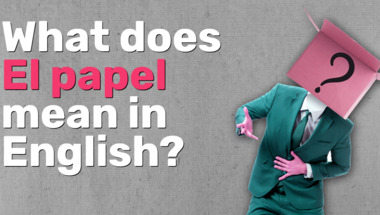
A quiz about the songs lyric
How many of these fantastic songs do you reme..
How many of these fantastic songs do you reme..

Trivia Quiz : Can you score
Expert questions for developed minds
Expert questions for developed minds
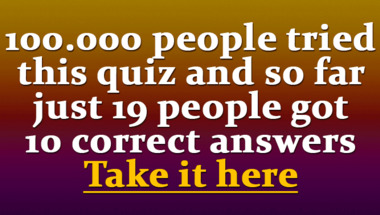
Quiz about Old Words
10 questions to test your knowledge
10 questions to test your knowledge
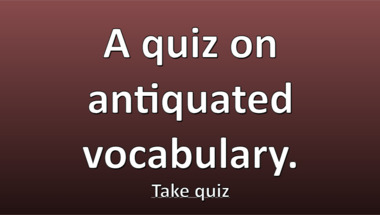
Hard general trivia quiz
10 questions that will most likely trick you
10 questions that will most likely trick you
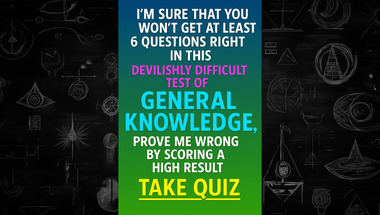
Advertisement
History trivia for the smart
How deep can you go?
How deep can you go?

Mixed history questions
Tell us your result in the comments
Tell us your result in the comments

10 knowledge questions
Let me know your score in the comments
Let me know your score in the comments
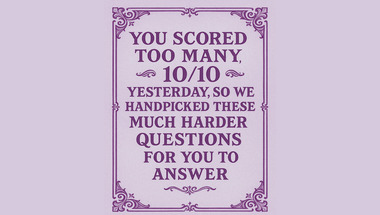
Quiz : Who is the lead singe
Let's see how smart you really are!
Let's see how smart you really are!

Amazing Trivia Quiz
10 hot questions
10 hot questions

1970s Song Quiz
How many songs can you guess?
How many songs can you guess?
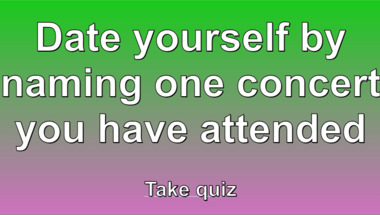
History Quiz
10 questions to answer
10 questions to answer
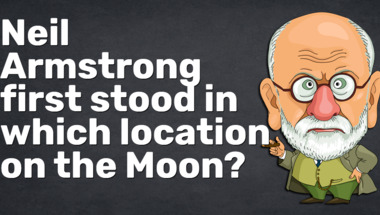
A quiz about the songs lyric
Let me know your score in the comments
Let me know your score in the comments
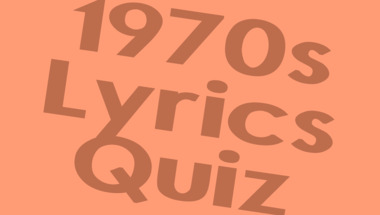
1970s Song Quiz
10 songs to guess
10 songs to guess

Super fun trivia quiz
Can you score 8/10?
Can you score 8/10?
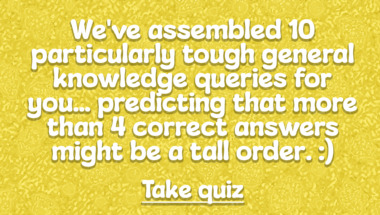
Insanely hard trivia quiz
Expect only 30% correct answers
Expect only 30% correct answers

Science & Nature Quiz
10 Trivia Questions
10 Trivia Questions

Advertisement
Mixed General Trivia Quiz
10 questions lined up
10 questions lined up
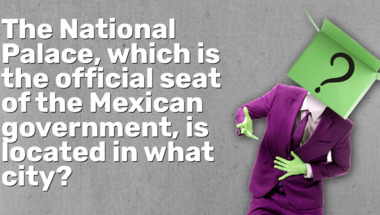
Trivia challenge for experts
How many correct will you get?
How many correct will you get?
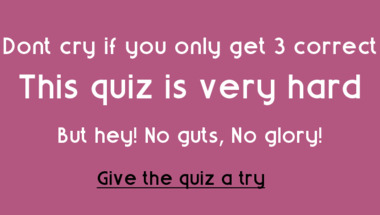
Quiz : Songs from the 1952 h
How many correct will you get?
How many correct will you get?

Movie Quiz
10 entertaining questions
10 entertaining questions
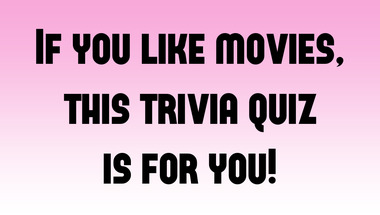
Cooking quiz
10 questions
10 questions

World History Quiz
What do you remember?
What do you remember?
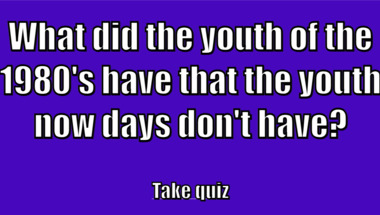
History Quiz
Expert Level
Expert Level

Expert level food & cook
10 questions for food lovers and home cooks
10 questions for food lovers and home cooks
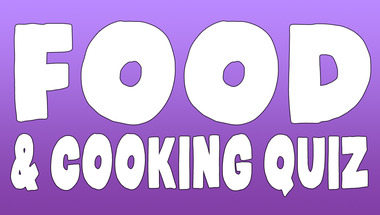
1950s Trivia Quiz
10 questions to test your knowledge
10 questions to test your knowledge
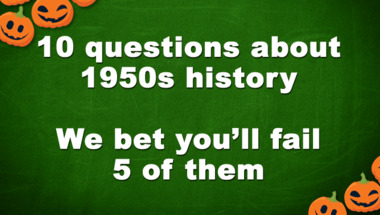
Capitals of the world quiz
How many of the world capitals do you know?
How many of the world capitals do you know?
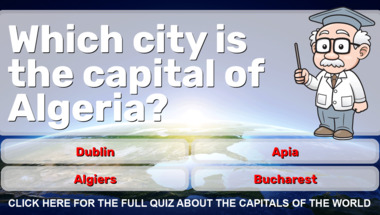
1970s Lyrics Quiz
How many correct will you get?
How many correct will you get?

History Quiz
10 mixed questions
10 mixed questions

Advertisement
Trivia test for smart people
How many correct will you get?
How many correct will you get?
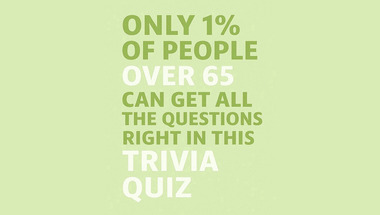
Expert food quiz for top hom
Can you score higher than 6/10?
Can you score higher than 6/10?

History and politics quiz
How many correct answers will you get?
How many correct answers will you get?

General Knowledge Quiz (10 q
Are you up for a quiz?
Are you up for a quiz?
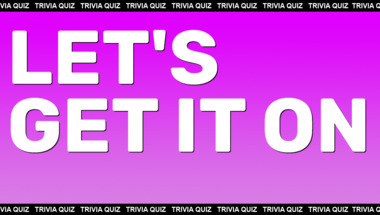
Mixed General Trivia Quiz
10 questions. Are you up for the challenge?
10 questions. Are you up for the challenge?
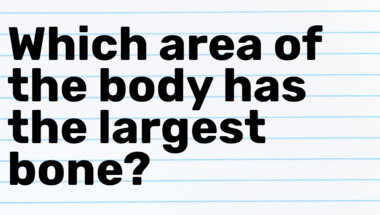
Science/Nature Quiz For Smar
10 Impossible Questions
10 Impossible Questions

Knowledge Quiz For Everyone
What do you know?
What do you know?

General trivia quiz with 10
How many correct will you get?
How many correct will you get?

Quiz : Job titles of the pas
How many of these old jobs do you remember?
How many of these old jobs do you remember?
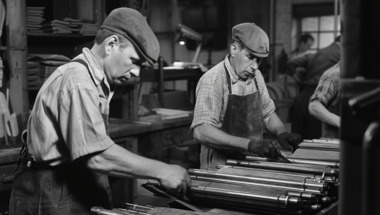
Trivia Quiz for humans and m
How high can you score?
How high can you score?
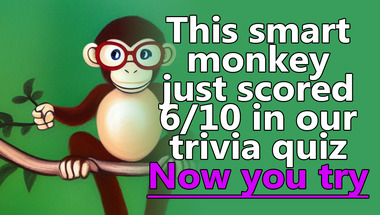
Mixed General Trivia Quiz
10 questions lined up
10 questions lined up
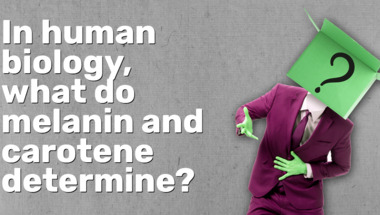
General Trivia Quiz
How many correct answers will you get?
How many correct answers will you get?

Advertisement